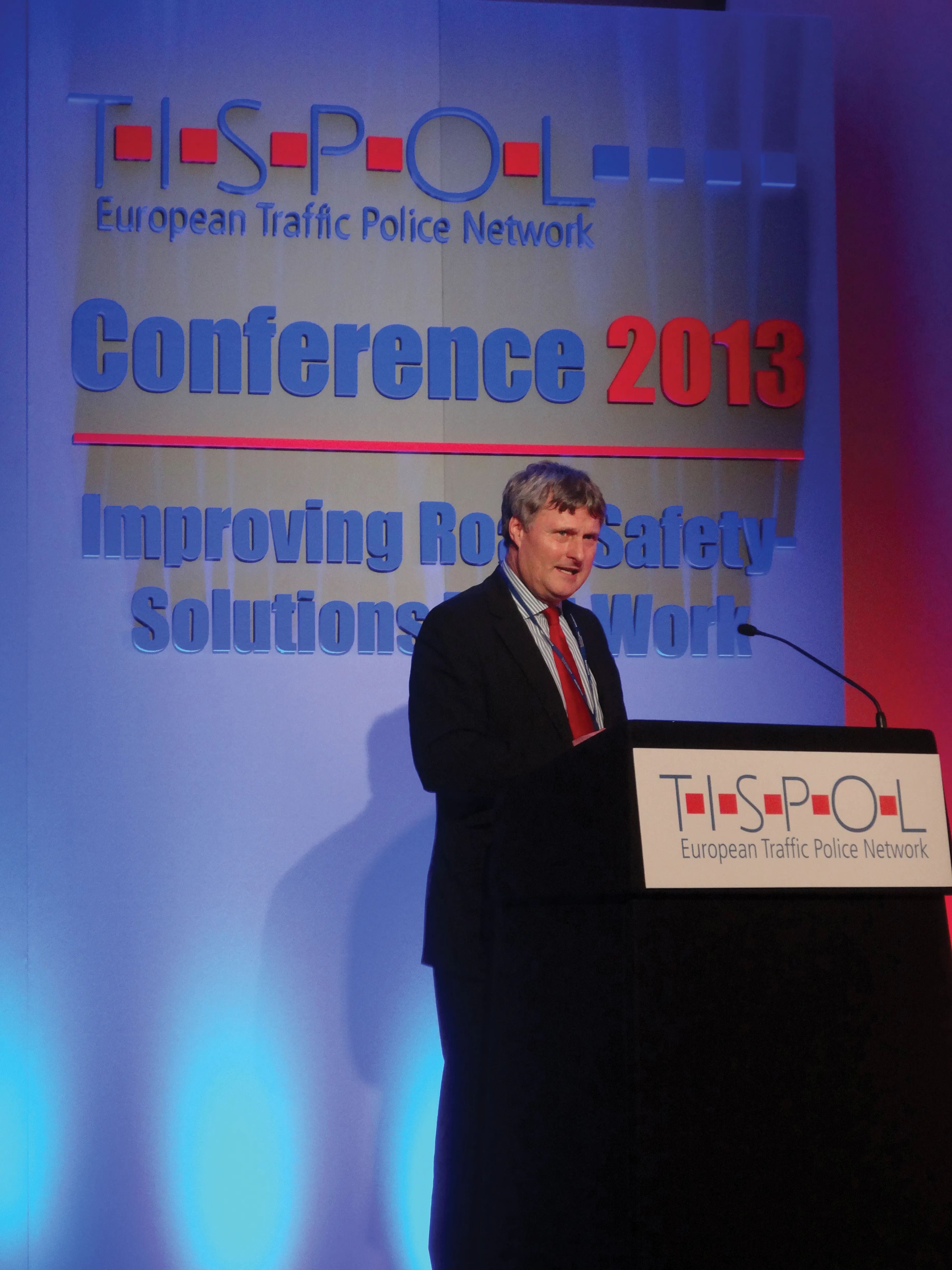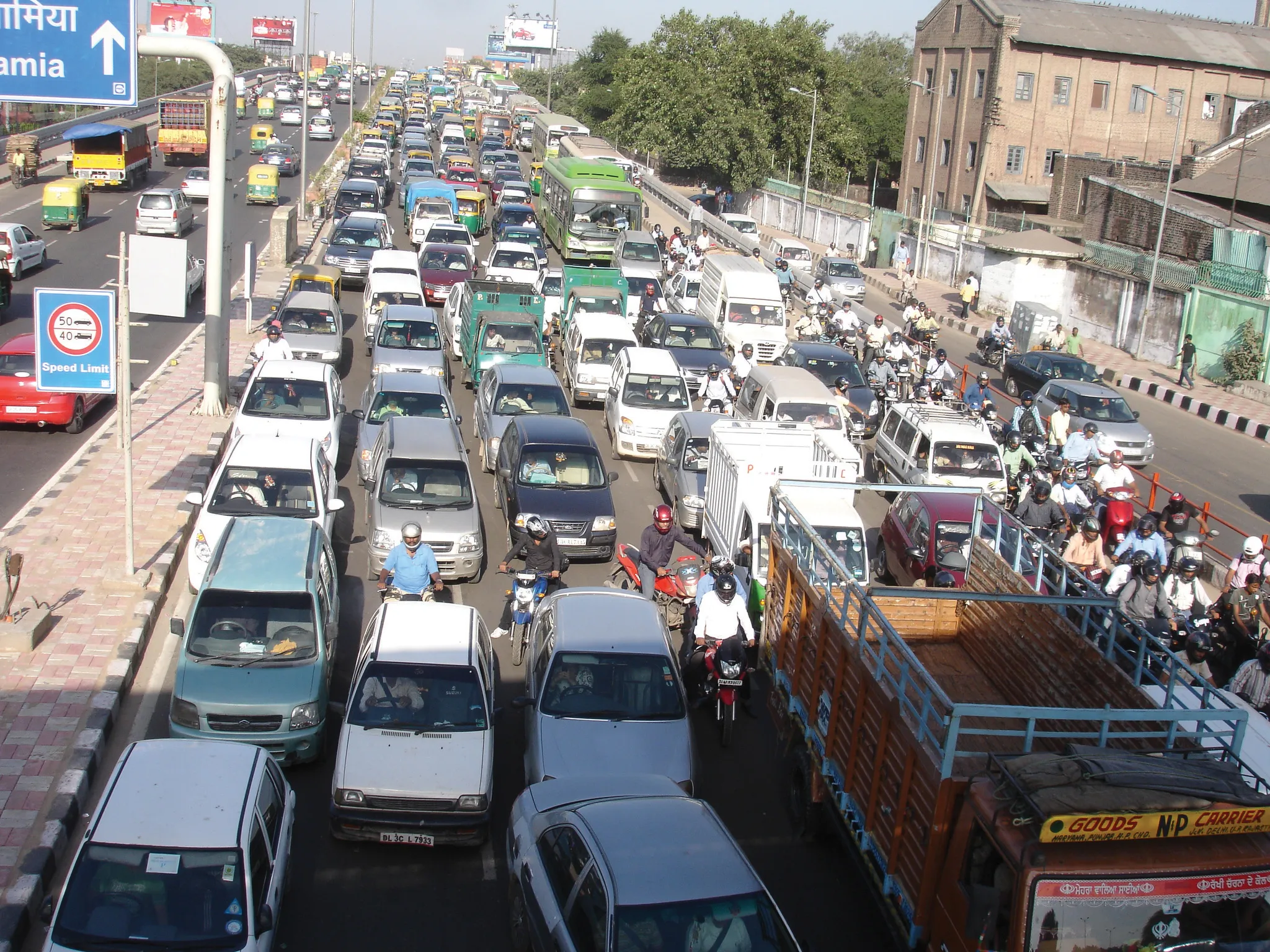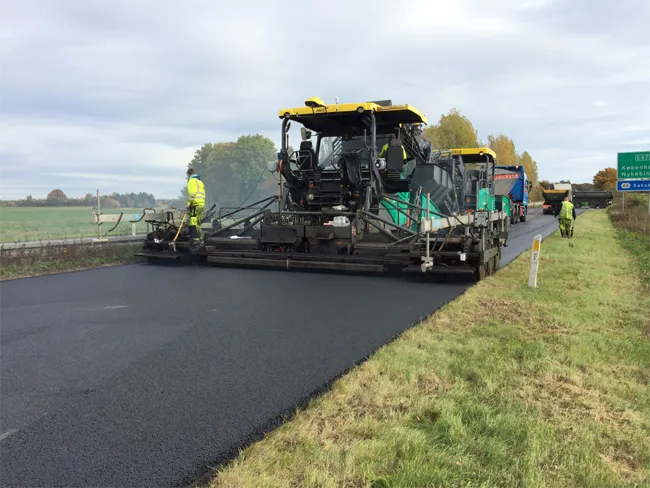Development of the connected and sustainable highways is moving quickly in the US and the Far East but progress in Europe is much less impressive. One example of a connected highway that offers an interesting model for European transport planners and policymakers is The Ray, a 29km stretch of Interstate 85 in the state of Georgia.
Originally established by a charitable foundation, The Ray offers an inspiring vision of a sustainable highway, even for the near future. Drivers crossing the state line from Ala
July 17, 2017
Read time: 6 mins
Development of a connected and sustainable highway needs dedicated leaders within institutions, companies and governments. Europe should take heed of The Ray initiative in the US, argues John Catling
Development of the connected and sustainable highways is moving quickly in the US and the Far East but progress in Europe is much less impressive. One example of a connected highway that offers an interesting model for European transport planners and policymakers is The Ray, a 29km stretch of Interstate 85 in the state of Georgia.
Originally established by a charitable foundation, The Ray offers an inspiring vision of a sustainable highway, even for the near future. Drivers crossing the state line from Alabama to Georgia first see photovoltaic panels rising above a rest stop, part of a sustainable electric vehicle charging station. A section of road comprising solar paving, developed by the French company Wattway, a184 Colas subsidiary, has turned a small section of the visitor’s centre into a testing ground for solar roadway technology.
Also, now showcased on The Ray is7927 WheelRight’s tyre monitoring technology. A driver can measure a car’s tyre pressure and tread depth within seconds by just driving over an embedded strip in the road. In the next few years, the addition of solar panels, sustainable landscaping and Internet of Things technology will make this an even smarter, more sustainable - and revenue-generating - road.
How did this forward-looking test-bed come into existence?
The Georgia state government named a stretch of the I-85 after Ray C. Anderson, who died aged 77 in 2011. Anderson was a progressive-minded engineer who founded and built up Interface, a large global modular carpet manufacturer based in La Grange, Georgia, in 1973. It was business as usual until 1994 when he recalled that he read Paul Hawken’s book “The Ecology of Commerce”. He later told US media that it made him think about the damaging effect of this business-as-usual could have on the environment.
“It was like a spear in the chest,” he told the Atlanta Journal-Constitution newspaper. “I was convicted as a plunderer of the Earth.”
Anderson set about what he called “mission zero” to make Interface a sustainable company by 2020 through using recycled material and renewable energy. He was often called the greenest chief executive in the US.
It is this sort of leadership and commitment that will push forward development of tomorrow’s highway infrastructure in Europe, according to an advisor to The Ray project. “There is nothing quite like The Ray in Europe,” said Andy Milton, a project leader at Innovia Technology, a technology and innovation consultancy based in Cambridge, England.
“It takes leadership and commitment, which in The Ray’s case is provided by the charity organisation, to spearhead projects. And then connectivity and collaboration between global companies and the public sector is essential for more projects like The Ray.”
New technologies need a proving ground to collect enough data in real-life situations to prove effectiveness and efficiencies and The Ray provides this. “Importantly, The Ray allows buyers of products and investors in companies to see performances.”
There is also the philosophy that the sum of the technologies installed together along a road is greater than their individual effectiveness on that stretch of2399 tarmac, he explains. For example, a lot of money could be saved if solar-powered road studs were used to help guide drivers of regular vehicles. Meanwhile, autonomous vehicles wouldn’t need as much street lighting. Energy savings would be substantial.
When Anderson died in 2011, family members, who were in the process of figuring out the best way to use the endowment left to their not-for-profit foundation set up by Anderson, felt a dirty highway was not the best way to remember the legacy of a green industrialist. So began a partnership between the Ray C. Anderson Foundation, Interface, the Georgia Conservancy and the Georgia Institute of Technology’s School of Architecture.
Together they conducted a roadway study to determine the state of local highways and what could be done to transform an industrial transportation corridor that runs between warehouses and plants for companies such as retailer Walmart and vehicle manufacturer Kia.
Having returned from my second visit to The Ray in early 2017, it is encouraging to see how the foundation has made so much progress towards its goal of a sustainable highway. Meanwhile, so many other sustainable highway projects in Europe seem to be mired in red tape and bureaucracy, partly due to a lack of leadership.
Last December, The Ray introduced both WheelRight’s drive-over technology and road embedded solar panels from Wattway. Working with vehicle partner Kia Motors Manufacturing Georgia and the charitable foundation behind the project, WheelRight’s system was installed within The Ray’s Visitor Information Centre at the start of the highway.
While tyre pressures are taken when the vehicle drives over the road-embedded sensor plates, tread depth is measured via sophisticated multi-image technology and imaging software. Results of tyre pressure and tread depth measurements are provided 24/7, automatically on all tyres within seconds via a touch-sensitive kiosk that provides a printed read-out to drivers.
The system is already proving itself in tests along the busy M6 motorway in England and The Ray’s installation is the first publicly available installation in the US. An ability to monitor tyre condition of public transport in major cities, including London, Paris and Beijing, can play a major role in increasing vehicle fuel efficiency, reducing accidents and improving the environment.
The foundation plans to build bioswales - shallow drainage ditches filled with native Georgia plants to capture highway run-off silt and pollutants. A 1MW solar installation is also planned. Not only will several of these projects improve the appearance of the highway, they will generate clean energy and bring in money for investors.
The challenge for European governments is to emulate this success. What seems to be integral to the DNA of The Ray is overall leadership, mainly from the family-led foundation. This clear vision to create a zero-carbon, zero-death, zero-waste, zero-impact highway underpins everything.
As well, active support by local enterprises such as Interface, the Georgia Conservancy and Georgia Tech’s School of Architecture created vital initial momentum for the project. They produced hard facts about the environmental impact of the highway and how a new approach needed to be taken. This solid partnership led to the involvement of other participants, including Wattway, Kia Motors and WheelRight. It has also drawn in environmental initiatives including the Pollinator Garden project, a bee research group from the Center for Biodiversity and Conservation at the American Museum of Natural History and the Greenbelt Native Plant Center.
It is also important to recognise the central role played by the3328 Georgia Department of Transportation for rolling out a number of technologies to improve both safety and sustainability.
Finally, the backing of a big corporation such as KIA Motors has been instrumental in bringing to life elements such as the electric charging station powered in part by photovoltaic panels. Their financial - as well as their vocal - support for the initiative is helping The Ray reach its full potential.
The message is clear and simple for European urban planners and policy heads. Without truly committed leadership, the active support of the highways authorities and engagement with large corporates and technology providers, we’re unlikely to see smart highways for some time to come. Projects such as The Ray show how much can be achieved with a clear commitment to sustainability and the active involvement of like-minded technology partners.
Development of the connected and sustainable highways is moving quickly in the US and the Far East but progress in Europe is much less impressive. One example of a connected highway that offers an interesting model for European transport planners and policymakers is The Ray, a 29km stretch of Interstate 85 in the state of Georgia.
Originally established by a charitable foundation, The Ray offers an inspiring vision of a sustainable highway, even for the near future. Drivers crossing the state line from Alabama to Georgia first see photovoltaic panels rising above a rest stop, part of a sustainable electric vehicle charging station. A section of road comprising solar paving, developed by the French company Wattway, a
Also, now showcased on The Ray is
How did this forward-looking test-bed come into existence?
The Georgia state government named a stretch of the I-85 after Ray C. Anderson, who died aged 77 in 2011. Anderson was a progressive-minded engineer who founded and built up Interface, a large global modular carpet manufacturer based in La Grange, Georgia, in 1973. It was business as usual until 1994 when he recalled that he read Paul Hawken’s book “The Ecology of Commerce”. He later told US media that it made him think about the damaging effect of this business-as-usual could have on the environment.
“It was like a spear in the chest,” he told the Atlanta Journal-Constitution newspaper. “I was convicted as a plunderer of the Earth.”
Anderson set about what he called “mission zero” to make Interface a sustainable company by 2020 through using recycled material and renewable energy. He was often called the greenest chief executive in the US.
It is this sort of leadership and commitment that will push forward development of tomorrow’s highway infrastructure in Europe, according to an advisor to The Ray project. “There is nothing quite like The Ray in Europe,” said Andy Milton, a project leader at Innovia Technology, a technology and innovation consultancy based in Cambridge, England.
“It takes leadership and commitment, which in The Ray’s case is provided by the charity organisation, to spearhead projects. And then connectivity and collaboration between global companies and the public sector is essential for more projects like The Ray.”
New technologies need a proving ground to collect enough data in real-life situations to prove effectiveness and efficiencies and The Ray provides this. “Importantly, The Ray allows buyers of products and investors in companies to see performances.”
There is also the philosophy that the sum of the technologies installed together along a road is greater than their individual effectiveness on that stretch of
When Anderson died in 2011, family members, who were in the process of figuring out the best way to use the endowment left to their not-for-profit foundation set up by Anderson, felt a dirty highway was not the best way to remember the legacy of a green industrialist. So began a partnership between the Ray C. Anderson Foundation, Interface, the Georgia Conservancy and the Georgia Institute of Technology’s School of Architecture.
Together they conducted a roadway study to determine the state of local highways and what could be done to transform an industrial transportation corridor that runs between warehouses and plants for companies such as retailer Walmart and vehicle manufacturer Kia.
Having returned from my second visit to The Ray in early 2017, it is encouraging to see how the foundation has made so much progress towards its goal of a sustainable highway. Meanwhile, so many other sustainable highway projects in Europe seem to be mired in red tape and bureaucracy, partly due to a lack of leadership.
Last December, The Ray introduced both WheelRight’s drive-over technology and road embedded solar panels from Wattway. Working with vehicle partner Kia Motors Manufacturing Georgia and the charitable foundation behind the project, WheelRight’s system was installed within The Ray’s Visitor Information Centre at the start of the highway.
While tyre pressures are taken when the vehicle drives over the road-embedded sensor plates, tread depth is measured via sophisticated multi-image technology and imaging software. Results of tyre pressure and tread depth measurements are provided 24/7, automatically on all tyres within seconds via a touch-sensitive kiosk that provides a printed read-out to drivers.
The system is already proving itself in tests along the busy M6 motorway in England and The Ray’s installation is the first publicly available installation in the US. An ability to monitor tyre condition of public transport in major cities, including London, Paris and Beijing, can play a major role in increasing vehicle fuel efficiency, reducing accidents and improving the environment.
The foundation plans to build bioswales - shallow drainage ditches filled with native Georgia plants to capture highway run-off silt and pollutants. A 1MW solar installation is also planned. Not only will several of these projects improve the appearance of the highway, they will generate clean energy and bring in money for investors.
The challenge for European governments is to emulate this success. What seems to be integral to the DNA of The Ray is overall leadership, mainly from the family-led foundation. This clear vision to create a zero-carbon, zero-death, zero-waste, zero-impact highway underpins everything.
As well, active support by local enterprises such as Interface, the Georgia Conservancy and Georgia Tech’s School of Architecture created vital initial momentum for the project. They produced hard facts about the environmental impact of the highway and how a new approach needed to be taken. This solid partnership led to the involvement of other participants, including Wattway, Kia Motors and WheelRight. It has also drawn in environmental initiatives including the Pollinator Garden project, a bee research group from the Center for Biodiversity and Conservation at the American Museum of Natural History and the Greenbelt Native Plant Center.
It is also important to recognise the central role played by the
Finally, the backing of a big corporation such as KIA Motors has been instrumental in bringing to life elements such as the electric charging station powered in part by photovoltaic panels. Their financial - as well as their vocal - support for the initiative is helping The Ray reach its full potential.
The message is clear and simple for European urban planners and policy heads. Without truly committed leadership, the active support of the highways authorities and engagement with large corporates and technology providers, we’re unlikely to see smart highways for some time to come. Projects such as The Ray show how much can be achieved with a clear commitment to sustainability and the active involvement of like-minded technology partners.









